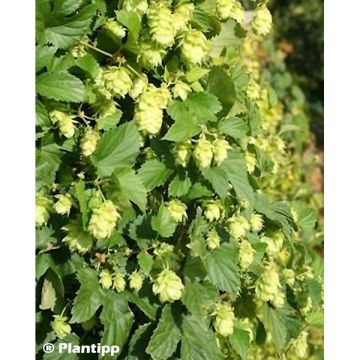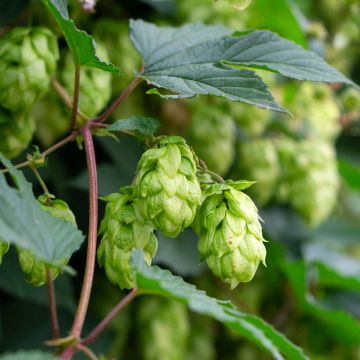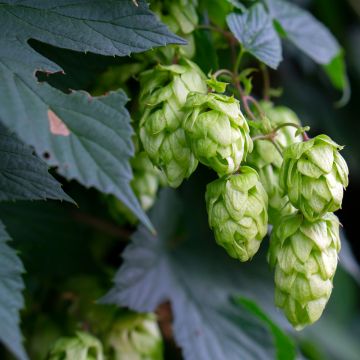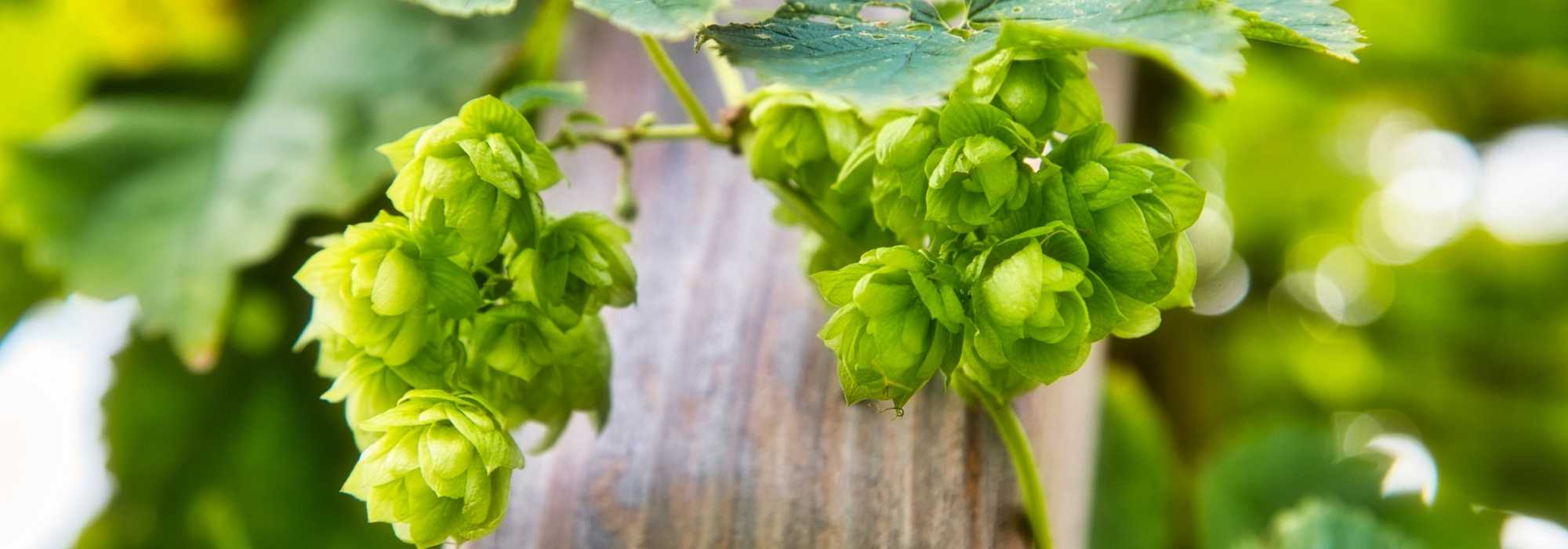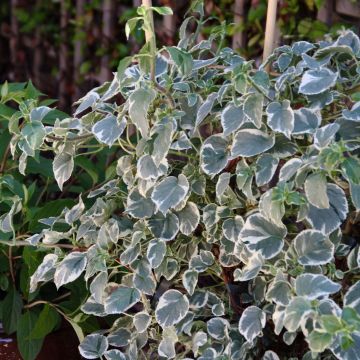

Humulus lupulus Cascade - houblon femelle
Humulus lupulus Cascade
Humulus lupulus Cascade
Common Hop, Hop
Special offer!
Receive a €20 voucher for any order over €90 (excluding delivery costs, credit notes, and plastic-free options)!
1- Add your favorite plants to your cart.
2- Once you have reached €90, confirm your order (you can even choose the delivery date!).
3- As soon as your order is shipped, you will receive an email containing your voucher code, valid for 3 months (90 days).
Your voucher is unique and can only be used once, for any order with a minimum value of €20, excluding delivery costs.
Can be combined with other current offers, non-divisible and non-refundable.
Why not try an alternative variety in stock?
View all →This plant carries a 12 months recovery warranty
More information
We guarantee the quality of our plants for a full growing cycle, and will replace at our expense any plant that fails to recover under normal climatic and planting conditions.
Would this plant suit my garden?
Set up your Plantfit profile →
Description
Humulus lupulus 'Cascade' is a variety of female hop with numerous and highly aromatic fruits that can be used for brewing beer. With its very fast growth rate, this climbing vine with fragrant summer flowers can effectively cover a fence, an unsightly wall, or an old tree. After taking on warm brown-golden colours in the autumn, the hop disappears during the winter. It will appreciate rich, moist, and well-drained soil in full sun or partial shade.
The 'Cascade' hop is a vine belonging to the Cannabaceae family, which includes, among others, hackberries (Celtis) and hemp. Widely distributed and naturalised around the world, including in Europe, the origin of wild hops is not known with certainty. Indeed, this plant has been cultivated for a long time for the production of beer, to which it generally imparts numerous flavours. Hops are also dioecious plants: in summer, it is the female plants that produce highly fragrant flower spikes, which then develop into typical cone-shaped fruits in the autumn, used for brewing beer. These decorative green, yellow-golden, and then brown cones are also very beautiful in dried bouquets. The deeply lobed leaves, with large teeth, are also highly ornamental and turn russet-brown in the autumn. The rough stems (which can be eaten young, like asparagus) allow the plant to cling and climb easily on surrounding plants.
The 'Cascade' variety flowers in the middle and end of summer. It is highly productive, and its elongated cones are highly aromatic, imparting floral and citrus notes to beers. It will delight both gardeners and beer enthusiasts! In favourable conditions, it can grow over 5m (16ft) long.
Very hardy, hops appreciate humus-rich and moist soils, that are also well-drained, not too heavy or too poor. Partial shade or non-scorching sun suits it well. With its very fast growth, this vine can quickly cover large surfaces. Therefore, it needs sufficient space for its development, or the opportunity to climb on nearby structures... However, its herbaceous nature and lack of climbing roots make it a safe plant for the buildings it grows on. It is excellent for quickly concealing an old wall, a decaying or uninteresting tree, or even a separating fence. It is possible to take herbaceous cuttings in March or semi-hardwood cuttings in summer. The sowing of its seed is quite simple, but rarely produces offspring that are true to the original variety. At the end of winter, simply prune the dry stems to 30cm (12in) above the ground.
Combine the 'Cascade' hops with other vigorously growing plants, such as Clematis montana 'Tetrarose', Actinidia kolomikta with its beautiful variegated leaves, Akebia quinata, honeysuckle, or even Clematis vitalba (a particularly vigorous species). With these woody, generous, and wild neighbours, it will create a fantastic, ever-changing, rustic, and welcoming scene!
Humulus lupulus Cascade in pictures


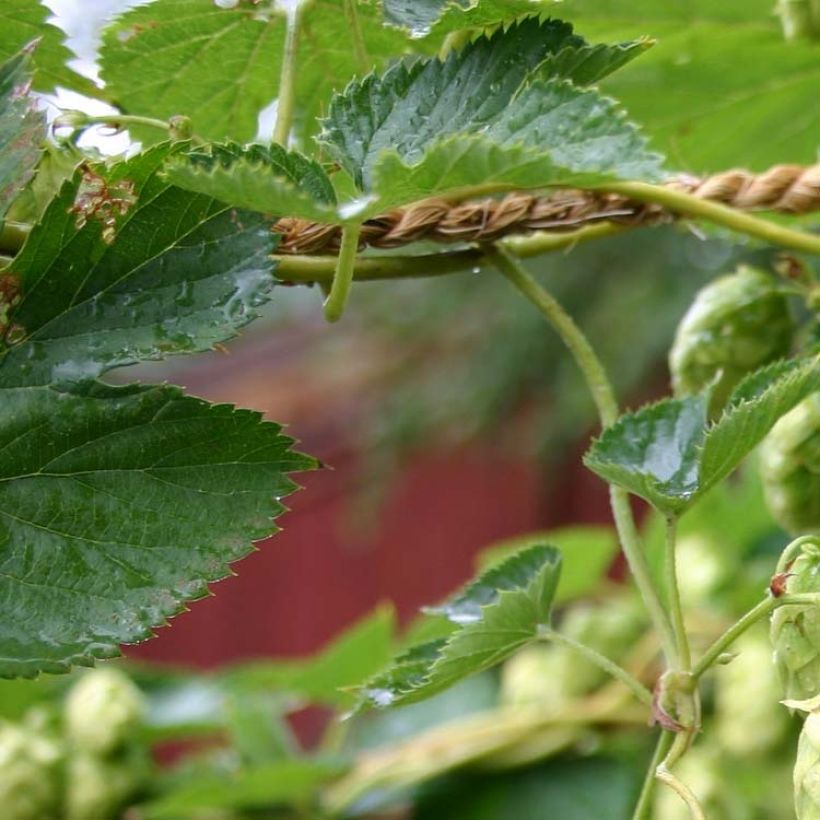

Flowering
Foliage
Plant habit
Botanical data
Humulus
lupulus
Cascade
Cannabaceae
Common Hop, Hop
Cultivar or hybrid
Other Humulus - Hop
View all →Planting and care
The 'Cascade' hop is easy to grow in ordinary and deep soil and can tolerate all exposures with a preference for partial shade. This variety tolerates sunny exposures quite well, except in the hottest areas. The plant shows a preference for clay-limestone and highly fertile soils, rich in humus. Plant the Hop in soil that remains moist. It attaches itself thanks to the small hooks present on the twining stems. Install a trellis if you want to adorn a wall, help them at the beginning to guide them in all directions to cover their support evenly. The stems detach from their support easily in autumn, as they dry out and die with the first frost. Prune your plant every year to a height of 30cm (12in), in February or March; remember to remove (and possibly replant) the tillers that will otherwise become invasive.
Planting period
Intended location
Care
Planting & care advice
This item has not been reviewed yet - be the first to leave a review about it.
Similar products
Haven't found what you were looking for?
Hardiness is the lowest winter temperature a plant can endure without suffering serious damage or even dying. However, hardiness is affected by location (a sheltered area, such as a patio), protection (winter cover) and soil type (hardiness is improved by well-drained soil).

Photo Sharing Terms & Conditions
In order to encourage gardeners to interact and share their experiences, Promesse de fleurs offers various media enabling content to be uploaded onto its Site - in particular via the ‘Photo sharing’ module.
The User agrees to refrain from:
- Posting any content that is illegal, prejudicial, insulting, racist, inciteful to hatred, revisionist, contrary to public decency, that infringes on privacy or on the privacy rights of third parties, in particular the publicity rights of persons and goods, intellectual property rights, or the right to privacy.
- Submitting content on behalf of a third party;
- Impersonate the identity of a third party and/or publish any personal information about a third party;
In general, the User undertakes to refrain from any unethical behaviour.
All Content (in particular text, comments, files, images, photos, videos, creative works, etc.), which may be subject to property or intellectual property rights, image or other private rights, shall remain the property of the User, subject to the limited rights granted by the terms of the licence granted by Promesse de fleurs as stated below. Users are at liberty to publish or not to publish such Content on the Site, notably via the ‘Photo Sharing’ facility, and accept that this Content shall be made public and freely accessible, notably on the Internet.
Users further acknowledge, undertake to have ,and guarantee that they hold all necessary rights and permissions to publish such material on the Site, in particular with regard to the legislation in force pertaining to any privacy, property, intellectual property, image, or contractual rights, or rights of any other nature. By publishing such Content on the Site, Users acknowledge accepting full liability as publishers of the Content within the meaning of the law, and grant Promesse de fleurs, free of charge, an inclusive, worldwide licence for the said Content for the entire duration of its publication, including all reproduction, representation, up/downloading, displaying, performing, transmission, and storage rights.
Users also grant permission for their name to be linked to the Content and accept that this link may not always be made available.
By engaging in posting material, Users consent to their Content becoming automatically accessible on the Internet, in particular on other sites and/or blogs and/or web pages of the Promesse de fleurs site, including in particular social pages and the Promesse de fleurs catalogue.
Users may secure the removal of entrusted content free of charge by issuing a simple request via our contact form.
The flowering period indicated on our website applies to countries and regions located in USDA zone 8 (France, the United Kingdom, Ireland, the Netherlands, etc.)
It will vary according to where you live:
- In zones 9 to 10 (Italy, Spain, Greece, etc.), flowering will occur about 2 to 4 weeks earlier.
- In zones 6 to 7 (Germany, Poland, Slovenia, and lower mountainous regions), flowering will be delayed by 2 to 3 weeks.
- In zone 5 (Central Europe, Scandinavia), blooming will be delayed by 3 to 5 weeks.
In temperate climates, pruning of spring-flowering shrubs (forsythia, spireas, etc.) should be done just after flowering.
Pruning of summer-flowering shrubs (Indian Lilac, Perovskia, etc.) can be done in winter or spring.
In cold regions as well as with frost-sensitive plants, avoid pruning too early when severe frosts may still occur.
The planting period indicated on our website applies to countries and regions located in USDA zone 8 (France, United Kingdom, Ireland, Netherlands).
It will vary according to where you live:
- In Mediterranean zones (Marseille, Madrid, Milan, etc.), autumn and winter are the best planting periods.
- In continental zones (Strasbourg, Munich, Vienna, etc.), delay planting by 2 to 3 weeks in spring and bring it forward by 2 to 4 weeks in autumn.
- In mountainous regions (the Alps, Pyrenees, Carpathians, etc.), it is best to plant in late spring (May-June) or late summer (August-September).
The harvesting period indicated on our website applies to countries and regions in USDA zone 8 (France, England, Ireland, the Netherlands).
In colder areas (Scandinavia, Poland, Austria...) fruit and vegetable harvests are likely to be delayed by 3-4 weeks.
In warmer areas (Italy, Spain, Greece, etc.), harvesting will probably take place earlier, depending on weather conditions.
The sowing periods indicated on our website apply to countries and regions within USDA Zone 8 (France, UK, Ireland, Netherlands).
In colder areas (Scandinavia, Poland, Austria...), delay any outdoor sowing by 3-4 weeks, or sow under glass.
In warmer climes (Italy, Spain, Greece, etc.), bring outdoor sowing forward by a few weeks.































